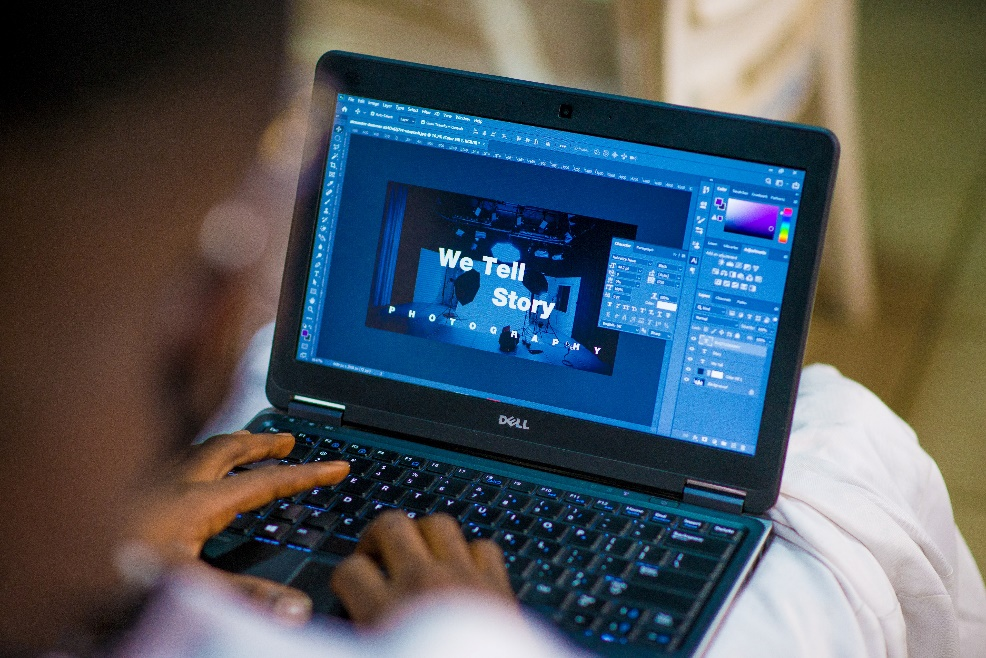One of the biggest issues that companies struggle with is an identity crisis. It’s something that even the larger brands struggle with. While many would think that it doesn’t play a big role in the grand scheme of things, it can often be the downfall ofa company as it fails to stick to its fundamentals.
Many companies don’t retain the image that made them great, while others suffer from a clinginess to the tried and tested instead of opting for change. These are all problems related to brand identity and make a huge impact on the business.
What Exactly Is a Brand Identity?
All the elements that a company uses to present an image to customers are known as its brand identity. It’s very easy to mistake it with brand image and branding, but people tend to use these terms loosely at times.
Imagine that a phone manufacturer wants to market itself as a sustainability-focused brand. Simply repeating that they care about the environment won’t get the job done. Instead, they have to present a detailed narrative as to what made them care about the environment, to begin with and why they’re working in the mobile industry. They should present the goals and missions that they want to achieve by operating in this industry.
How Businesses Fit in The Equation
Your brand identity separates you fromthe crowd as a business and makes you recognizable to the public. It’s essential for developing a relationship with the customers, which not only bringsin new customers but also retains them for a longer period and creates a better perception.
The Difference Between Brand, Brand Identity, Brand Identity Design
It’s important to clear up the differences between the three before moving forward, as the distinction can help paint a better picture:
Brand
A brand is the concept of your mission and values as a business. According to Muhtar Kent, the former CEO of Coca-Cola, a brand is a promise. It can be philosophical or even emotional.

Brand Identity
The way a brand visually expresses its values, ideas, and its goals is its brand identity. For example, Coca-Cola has always focused on the drink representing happiness and communities coming together, which is how they express their company’s values.
Developing a Strong Brand Identity
Know Thyself
Not only does it become easier, but it’s an important step to ask yourself some important questions about your business to create a brand identity, to begin with. These questions include, but aren’t necessarily limited to:
- Your mission (why you do what you do)
- Your values (the beliefs that drive your company)
- Your brand personality (if your brand was a person, what kind of personality would they have?)
- Your USP(what makes you different from the competition?)
- Your brand voice (if your brand was a person, how would it communicate?)
Before you work on establishing a brand identity, these are the fundamentals that you nail to focus on. It might require ample thinking and ideation to get this right, but they’re helpful in the long run.
The Key Questions for Developing a Consistent Image
It’s important that you have answers to the following:
- What were the reasons for starting this brand or company? What did it aim to achieve, and what led to its inception?
- What are the beliefs and values that are important to us as a company?
- What is that you do that no one else does better?
- How are you special?
- In three words, how would you describe your brand?
- If your customer had to describe your brand in three words, what would they be?
The Key Elements of Brand Identity
Some of the elements that help distinguish a brand’s identity from another include:
Logo
A logo is a symbol or font-based depiction of the company’s name. Some companies rely on images as logos, such as Apple, while others, like Coca-Cola, use text depictions to represent the company logo. Some companies have a combination of the two, with FedEx being a major example. Companies don’t always stick to one logo, improving and making changes over time while also featuring seasonal variations to keep themselves relevant.
Your goal is to design a logo that you can carry for years to come, so it shouldn’t be something that might lose relevance. Less is always more.
Website
Businesses are becoming more conscious about their presence online, and one of the fundamentals of that is their website. Whether you’re selling a product or a service, people will use your website to get an idea of how you operate.
Many businesses generate a majority of their leads from their website as well. Your website should be a portal that gives a detailed idea of your brand identity and convince people to do business with you. Making an impression with it is key to generating leads, and many people gauge businesses with how they run their websites.
Product Packaging
If you’re selling a physical product, you don’t want to skimp out on the packaging. If a customer receives a product in a generic package, they’re going to get a bad impression to begin with, and this might affect your overall review. Businesses are getting extremely creative with their packaging, including customized messagesand little touches here and there with quality materials.
While it’s not a main part of the package, it’s something that adds more to the overall experience and could be one of the reasons why someone might recall your brand differently.
Business Cards
Business cards are an important part of your stationery. As a business, you want to be accessible, and while most people can easily look you up online, it’s better if you can give them an everlasting impression. A smartly designed business card can be memorable and might even be something they could share with other people, increasing your outreach.

A business card should have your logo and your details listed clearly so that there’s no difficulty in getting in touch with you.Even in the digital era, they’re more relevant than ever, and people incorporate creative designs to make them more memorable.
Fonts
While many people might not pay a great deal of attention to this aspect, brands also set a strong image with the fonts they use. Some companies like toy manufacturers might use playful fonts for their logos and branding material, but they might have a more serious font where they want to describe a product.
In other cases, companies will stick to a typeface and use variations of the same or a combination of two fonts across a passage to give it a cohesive look.
Colors
People often underestimate the value and impression that colors have when it comes tobrand identity. The kind of color you use sends off a direct message. For example, brands geared towards professionals and technology tend to use neutral colors or stick to monochrome themes. A sports brand, on the other hand,may use vibrant colors to give off a flashy look to accompany its energetic vibe.
When a brand becomes significant, its use of colors can immediately become recognizable. For example, the colors red and white can be associated with so many brands. If you’re at a soda dispensing machine, just the colors could indicate that it’ll dispense Coke.
Conclusion
A brand identity is an important part of what a business stands for. It’s something that concerns loyal customers, and it brings in the eyes of the public as many people that retain consumers care about these aspects in the long run. Brand identity revolves heavily around design and formulating various ideas into the design.
With the right creatives at the helm, businesses can have an everlasting effect on people and potentially do better with the right message through their brand identity.
Work With Custom Design Services in Miami
Having a brand identity isn’t all about pomp and show, but it’s a pivotal process to make your mark in your industry. The NetMen Corp has been in the industry for over 20 years, helping businesses make the most of digital resources to grow.
We help businesses make the most of their brand identity and produce a variety of materials for them with our corporate design services in Miami. Our suite of solutions includes social media post design, custom web design, digital illustration, packaging, and many other online and graphic design services.Reach out to us today to start working on your designs.




